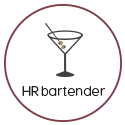Let’s face it, human resources professionals often know personal things about their employees, like how much money they make. As a result, it can be tempting to want to help employees tap into community resources. That’s not a bad thing, if it’s done the right way. Today’s reader note wants to know more about how to help their workforce.
I work in employee relations/training department for an organization in the human services/non-profit field. I’ve been doing some research to find resources for HR professionals, like myself, who primarily employ and support staff who are often living close to or below the poverty line.
Generally, I’m looking for resources or best practices on providing and informing staff of community supports. For example, we link our employees to information about subsidized child care resources, job training, etc. We do have an employee assistance program (EAP) which is heavily utilized, but I often feel like our employees could use supplemental information. Any thoughts on some written resources I can reference?
Because there’s the opportunity to cross over into legal issues, I asked our friend Heather Bussing if she would lend her experience and thankfully she said “yes”. Heather is an employment attorney and regular contributor at HR Examiner. You know her from this post about the importance of job references. (It’s still one of my favorites.)
Please remember that Heather’s comments shouldn’t be construed as legal advice or as pertaining to any specific factual situations. If you have detailed questions, they should be addressed with your friendly neighborhood labor and employment attorney.
Heather, thanks so much for helping with this reader note. Let’s start with EAPs. For those readers who might not be aware, what’s an employee assistance program and why should organizations offer them?
[Bussing] Many organizations provide Employee Assistance Programs (EAPs) to employees and often their families and domestic partners. The programs available vary widely, but usually include resources and referrals for substance abuse, counselling, and community resources for health and family care issues. Some companies offer access to an advice nurse, help with adoption, daycare or elder care resources, and some provide even provide assistance gender identity issues. The nature and extent of the programs depend on the employer’s size, commitment to the program, and ability to pay for the services.
I completely understand this HR pro’s situation. I’ve worked places where the majority of employees worked for minimum wage, which was very close to poverty. Before we talk about what options are available, in general, are there any words of caution that HR needs to consider before giving employees advice?
[Bussing] In many places, working for minimum wage is poverty. Most people cannot survive on a minimum wage job without family and public assistance.
Not being able to afford healthy food, reliable transportation, daycare, and basic necessities quickly becomes an HR problem because people have trouble showing up for work and staying healthy. The stress of poverty is something that many employers don’t understand or appreciate. And it disproportionately affects women and people of color.
So before giving someone advice, make sure you truly understand their situation, what is needed, and how you can effectively help. It’s easy to make assumptions about what someone else should do based on our own experiences, when the truth is that the situation is often more dire than you can imagine.
Are you aware of a place where individuals could find out what community assistance programs are available? I must admit I couldn’t think of one place that centralizes all of that information. It’s all over the place based on the type of need (i.e. food, shelter, financial, medical, etc.)
[Bussing] There is rarely a central place where people can learn about community resources because some are offered by local, state or federal government, and others are provided by nonprofits, churches, or neighborhood organizations. Sometimes a community will have a central resource that can refer people to the organizations they need. But usually, it’s a research project.
Start by searching ‘human services’ agencies, ‘community action’ organizations, ‘health clinics’, ‘public housing’, and ‘food banks’. Find out if they keep a list of other community resources and talk to someone at each of them so you understand what they do, who qualifies for help, and how to participate and include this information in your list of resources.
If HR were to inform employees about options they can research and apply for, are they liable if something happens such as the employee is denied support or feels they’ve been discriminated against?

Last question. For organizations that are in this position, is there anything they can do to help the situation?
[Bussing] Always start with what your own organization can do. Even if raises aren’t possible, offering other kinds of benefits often are. Sometimes something as simple as providing employees with a public transportation pass can make all the difference. And when the employer provides the transportation, they can often take advantage of tax savings and other governmental incentives for doing so.
Starting a garden, organizing clothing exchanges, especially for kids’ clothes and shoes, and offering flexible hours can all help and don’t cost a lot to do.
I want to extend a huge thanks to Heather for sharing her thoughts and expertise. This isn’t an easy subject. Heather’s comment to look inward first is spot on. I can see where that would apply to individuals as well as organizations.
Human resources has the opportunity to make employees lives better, both from creating internal change as well as communicating external resources. But it takes empathy and education.
Image captured by Sharlyn Lauby after speaking at the MBTI Users Conference in San Francisco, CA
22








Lisa John says
You are right, human resources has the opportunity to make the life of each and every employee good. Thank you explaining the concepts. Looking for more articles. Thank you in advance.